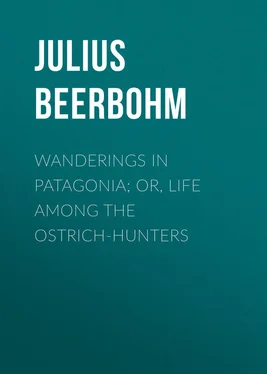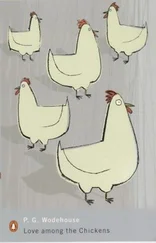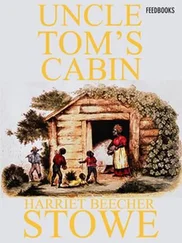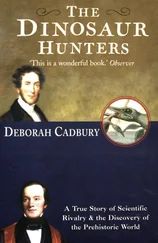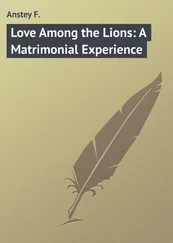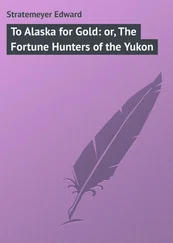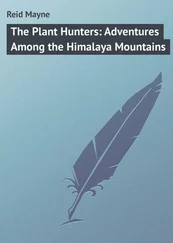Julius Beerbohm - Wanderings in Patagonia; Or, Life Among the Ostrich-Hunters
Здесь есть возможность читать онлайн «Julius Beerbohm - Wanderings in Patagonia; Or, Life Among the Ostrich-Hunters» — ознакомительный отрывок электронной книги совершенно бесплатно, а после прочтения отрывка купить полную версию. В некоторых случаях можно слушать аудио, скачать через торрент в формате fb2 и присутствует краткое содержание. Жанр: foreign_antique, foreign_prose, Путешествия и география, на английском языке. Описание произведения, (предисловие) а так же отзывы посетителей доступны на портале библиотеки ЛибКат.
- Название:Wanderings in Patagonia; Or, Life Among the Ostrich-Hunters
- Автор:
- Жанр:
- Год:неизвестен
- ISBN:нет данных
- Рейтинг книги:4 / 5. Голосов: 1
-
Избранное:Добавить в избранное
- Отзывы:
-
Ваша оценка:
- 80
- 1
- 2
- 3
- 4
- 5
Wanderings in Patagonia; Or, Life Among the Ostrich-Hunters: краткое содержание, описание и аннотация
Предлагаем к чтению аннотацию, описание, краткое содержание или предисловие (зависит от того, что написал сам автор книги «Wanderings in Patagonia; Or, Life Among the Ostrich-Hunters»). Если вы не нашли необходимую информацию о книге — напишите в комментариях, мы постараемся отыскать её.
Wanderings in Patagonia; Or, Life Among the Ostrich-Hunters — читать онлайн ознакомительный отрывок
Ниже представлен текст книги, разбитый по страницам. Система сохранения места последней прочитанной страницы, позволяет с удобством читать онлайн бесплатно книгу «Wanderings in Patagonia; Or, Life Among the Ostrich-Hunters», без необходимости каждый раз заново искать на чём Вы остановились. Поставьте закладку, и сможете в любой момент перейти на страницу, на которой закончили чтение.
Интервал:
Закладка:
Yerba-maté is a kind of tea in great repute throughout South America, especially amongst the country people, who drink it at all their meals, and whenever they have nothing particular to do, which is very often. It is the leaf of a shrub ( Ilex Paraguanensis ) extensively cultivated in Paraguay and the Brazils, constituting, in fact, the chief article of commerce of the former country. The powdered leaf is steeped in boiling water, and imbibed through a thin pipe ( bombilla ), perforated with holes, so as to prevent the fine herb from being sucked up with the fluid. It has a bitter, aromatic flavour, and though usually taken with sugar, many find it equally palatable without the latter adjunct. Its restorative powers are marvellous, and frequently, when thoroughly exhausted after a hard day's ride, I have taken a cup or two of maté, and found myself immediately revived and invigorated. It is decidedly a better stimulant than either tea or coffee, and as it does not seem to lose its flavour by exposure to the air and damp as quickly as those articles do, it is naturally preferred by those whose profession forces them to take these qualities into account in the selection of their victuals. Maté, as I have already said, is indispensable to the hunter in Patagonia. For months it is often the only addition he can make to his otherwise exclusively meat diet. In fact he is never without it, except when in the saddest plight, and for its sake he would forego any other luxury, such as sugar, biscuit, or rice.
It is surprising that hitherto no attempt has been made to introduce yerba-maté into Europe as an article of domestic consumption. It has only to be known to be appreciated, and as it could be imported pure , far cheaper than tea or coffee, it might in time prove a formidable rival to those beverages, especially among the working classes, to whom its invigorating qualities would particularly recommend it.
Whilst the rain is pouring down upon us, I may as well take the opportunity of introducing my four companions to the reader. But first a few words as to their common profession, that of the ostrich-hunter.
In the plains that stretch from lat. 40° to 53° S., and from the sea-coast to the Cordilleras, the ostrich and the guanaco roam in immense numbers, their procreativeness being such as to more than neutralise the ravages caused among them by their numerous enemies, such as the Indians, the pumas, and the foxes. The Patagonian ostrich is much smaller than his African cousin, and the feathers are not nearly so valuable, the price usually paid for them at Sandy Point being from $1 to $2 per lb. The trade of the ostrich-hunter is not, therefore, very lucrative; but his wants, on the other hand, are very modest. Besides, he follows his profession more from a love of the wild pampa life, with its freedom from irksome restraint and awkward social obligations, than from any desire to amass wealth; more from a necessity to satisfy his vagabond instincts, than from any impulse derived from some definite aim in life. His hunting-ground extends as far as he chooses to gallop. His stock-in-trade consists of ten or twelve hardy horses, five or six dogs of a mongrel greyhound species, a lasso, a pair of bolas, a knife, a revolver, and a long steel; besides, of course, all the necessary accoutrements for his horse, which, together with the indispensable capa, form his bed at night.
The capa is a long robe of guanaco furs, about five and a half feet long, by four and a half broad. They are made by the Indian women, who are very clever at sewing, notwithstanding the primitive clumsiness of their rude tools. Their needles consist of pieces of bone sharpened to the requisite point, and the thread they use is made from guanaco sinews. The skins are of the young guanacos before they are three weeks old, as after that time the fur becomes coarse and woolly. These capas are extremely warm, and effectually protect one from the cold winds that blow over the pampas, when almost any other garment would prove insufficient. A novice experiences considerable difficulty in the management of their somewhat awkward folds, especially on horseback; but the Indians wear them with infinite ease and grace.
The bolas, or balls, are of two kinds, being either two round stones or pieces of lead, covered with leather and joined by a thong of from six to eight feet long; or three balls, united by thongs to a common centre. The latter are used chiefly for guanaco-hunting, and not a little skill is required to handle them efficiently. After having been swung round the head till the requisite pitch of velocity has been attained, the balls are hurled at the animal pursued, and becoming firmly twisted round whatever part of its body they may fall on, they effectually hamper its speed, and enable the hunter to come up to it and give the coup de grace with his long knife.
With no other impedimenta than the above-mentioned, the ostrich-hunter roams at will over the vast pampas. At night-time he makes himself at home under shelter of some thick bush, which, if such be his caprice, may become his head-quarters for weeks, and even months, especially if the game in the vicinity be abundant. His movements are altogether uncertain, and by no means regulated by any reference to time, to the course of which he is sublimely indifferent. The chase supplies all his wants. With the hide of the guanaco he makes his lasso, reins, bolas, and even shoes; whilst its flesh, varied by that of the ostrich, forms his staple article of diet. When he has collected a sufficient quantity of feathers, he pays a flying visit to Sandy Point, sells them, and with the produce lays in a new stock of tobacco and maté, renews his wardrobe, i. e. , say a shirt, a poncho, a jacket, and a chiripà; and if there still remains anything over, he may buy another horse, or some dog which may have taken his fancy.
For the rest, he is a careless, easy-going vagabond, always cheerful, whatever plight he may be in, and submitting with calm philosophy to any of the many hardships the inclemency of the climate may entail upon him. There are, however, few Ostrich-hunters pur sang in Southern Patagonia, though up near the Rio Negro they are more numerous; but those one does meet with are all distinguished by the characteristics I have described.
I will now attempt a sketch of my four companions, beginning with the most striking among them, Isidoro, who is several times mentioned in Captain Musters' interesting book, 'At Home with the Patagonians.' He was an Argentine Gaucho, with a dash of Indian blood in his veins, who had come down to Patagonia many years ago from the Rio Negro. He was a slender, well-built man, with a pleasant, swarthy face, of a warm, earth-brown complexion, set in by a profusion of long black hair, which he carefully groomed every morning with a comb, whose teeth, being old, were decayed and few and far between, kept for the purpose in the recesses of a rather greasy cap. Broad and shaggy eyebrows, meeting over a bold Roman nose and shading a pair of bright, restless eyes, habitually veiled by half-closed lids and the longest of lashes; slightly high cheekbones, full thick lips, and a shaggy beard and moustache, completed the tout ensemble of his really striking face, the general expression of which was one of intelligence and good humour.
His dress, which combined materials of Indian as well as European manufacture, was not unpicturesque, and consisted of a woollen shirt and a 'chiripà' – a covering for the lower limbs something like a kilt, secured by a strap at the waist, into which were stuck the inevitable hunting-knife, revolver, pipe, and tobacco-pouch – while his feet were encased in potro boots, tied at the knees with Indian-worked garters; and over all hung the long capa.
The recipe for making a pair of potro boots is very simple, and the operation requires no previous knowledge of the cobbler's art. Having killed your horse, you make an incision with a sharp knife round the hide above the hock, say at the commencement of the lower thigh, and another a couple of inches below the curb-place, and then proceed to draw the hide off the legs. Each leg will thus supply a comfortable Wellington, in which the point of the hock has become the heel. Of course, before fit for wear, the hide must be well softened by hand – a task which requires no little patience; for if not thoroughly done, the boots after a time will become quite hard and useless. As soon as they have been worn long enough to have taken the shape of the foot, the toe-ends are sewn up, and the transformation of your horse's hocks into easy-fitting boots is an accomplished feat.
Читать дальшеИнтервал:
Закладка:
Похожие книги на «Wanderings in Patagonia; Or, Life Among the Ostrich-Hunters»
Представляем Вашему вниманию похожие книги на «Wanderings in Patagonia; Or, Life Among the Ostrich-Hunters» списком для выбора. Мы отобрали схожую по названию и смыслу литературу в надежде предоставить читателям больше вариантов отыскать новые, интересные, ещё непрочитанные произведения.
Обсуждение, отзывы о книге «Wanderings in Patagonia; Or, Life Among the Ostrich-Hunters» и просто собственные мнения читателей. Оставьте ваши комментарии, напишите, что Вы думаете о произведении, его смысле или главных героях. Укажите что конкретно понравилось, а что нет, и почему Вы так считаете.
